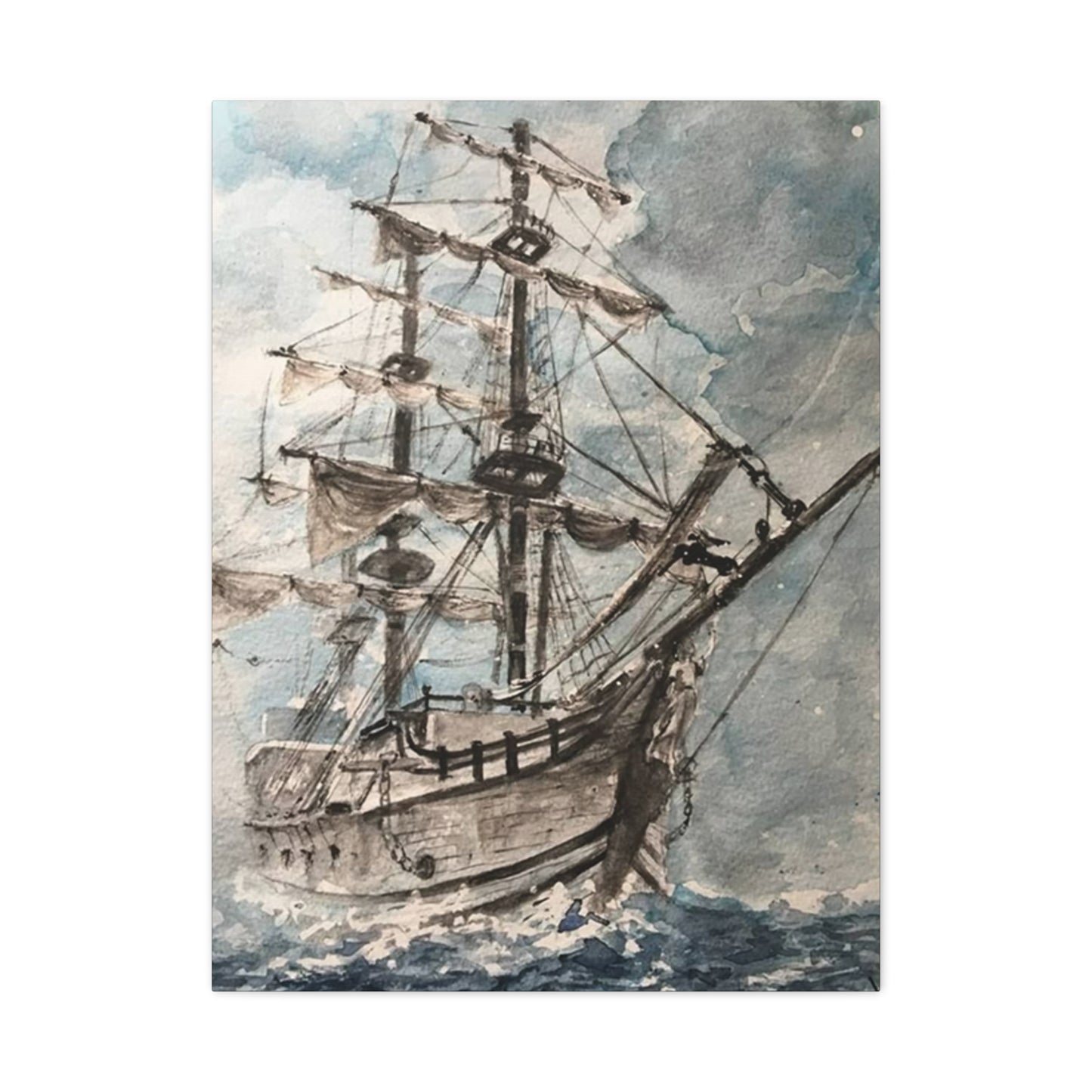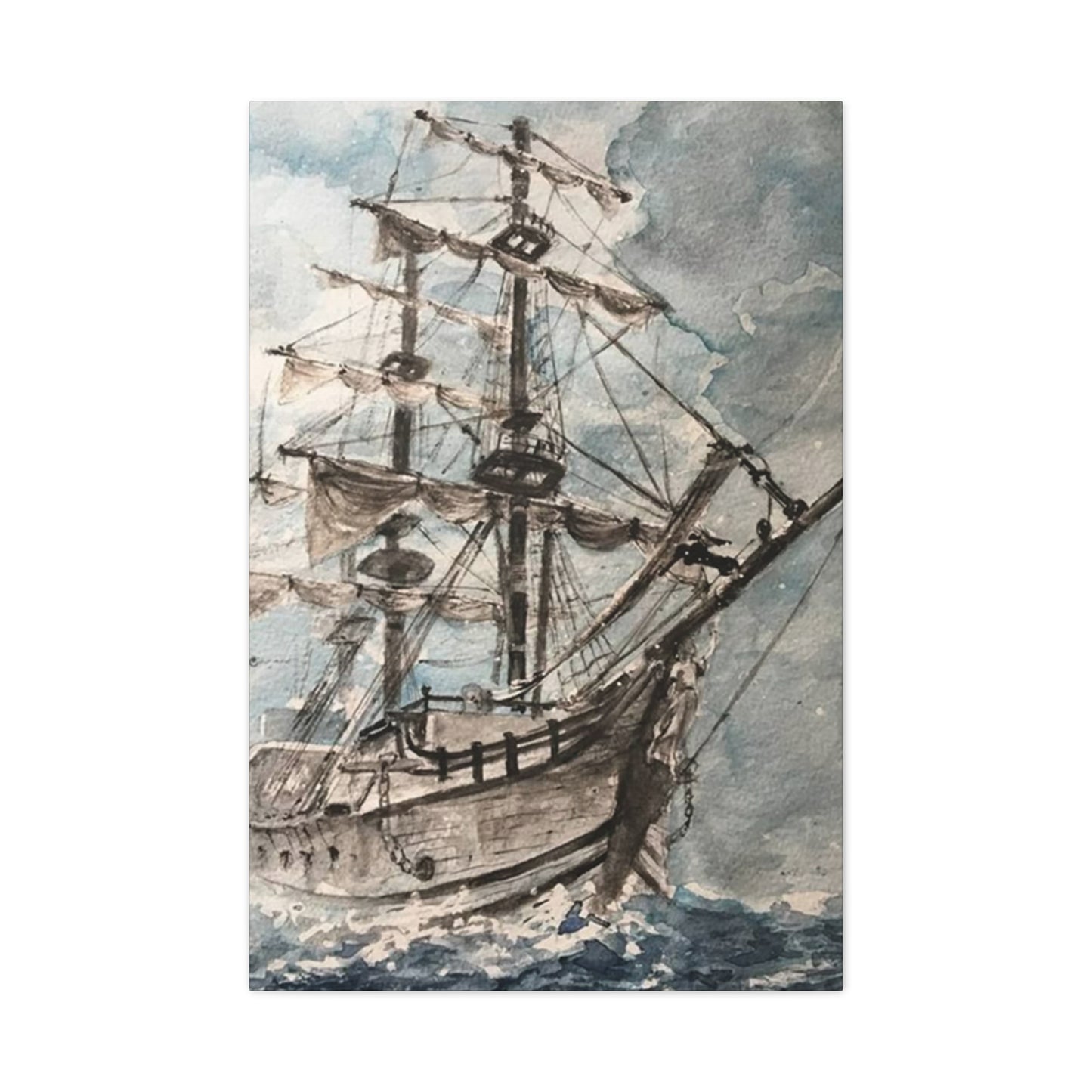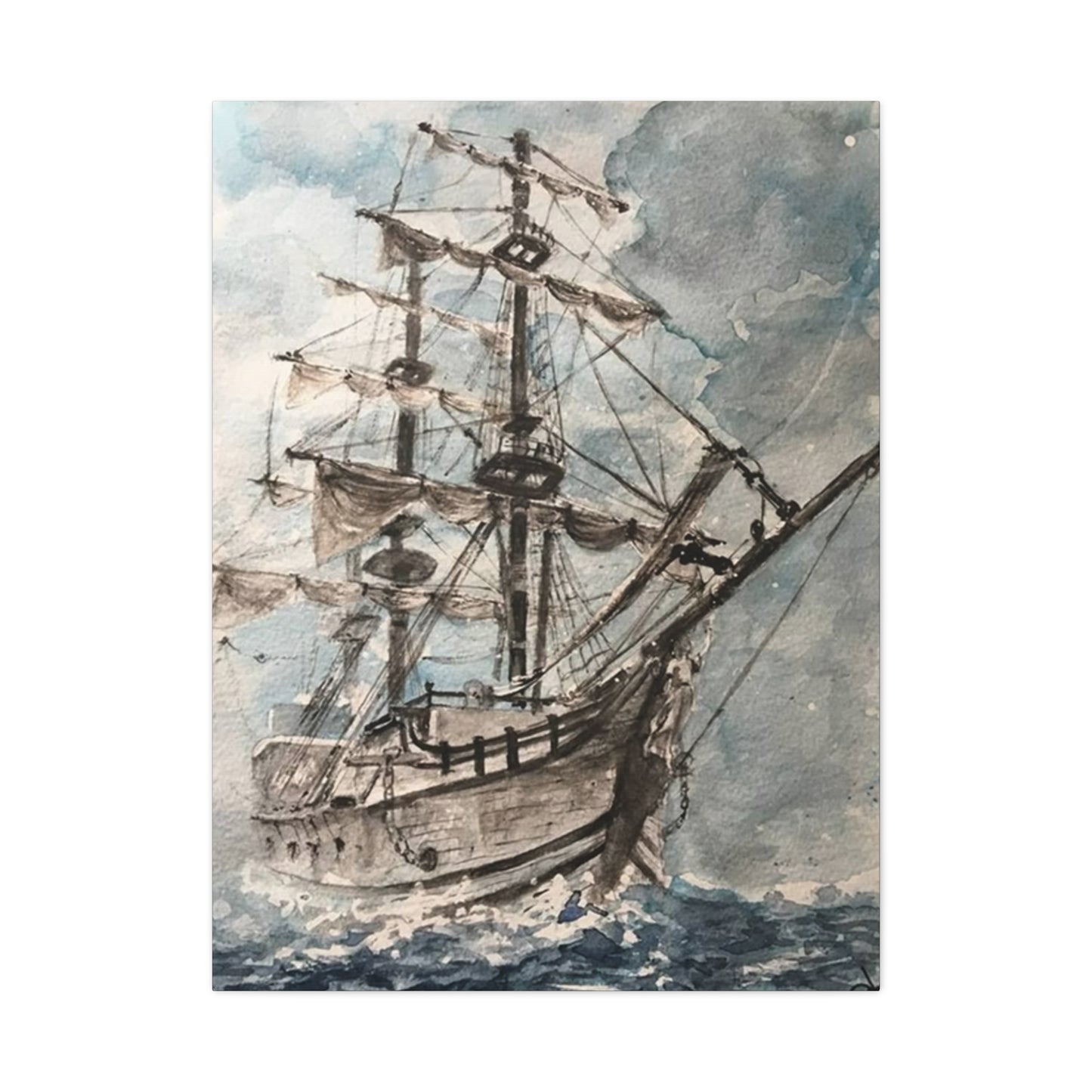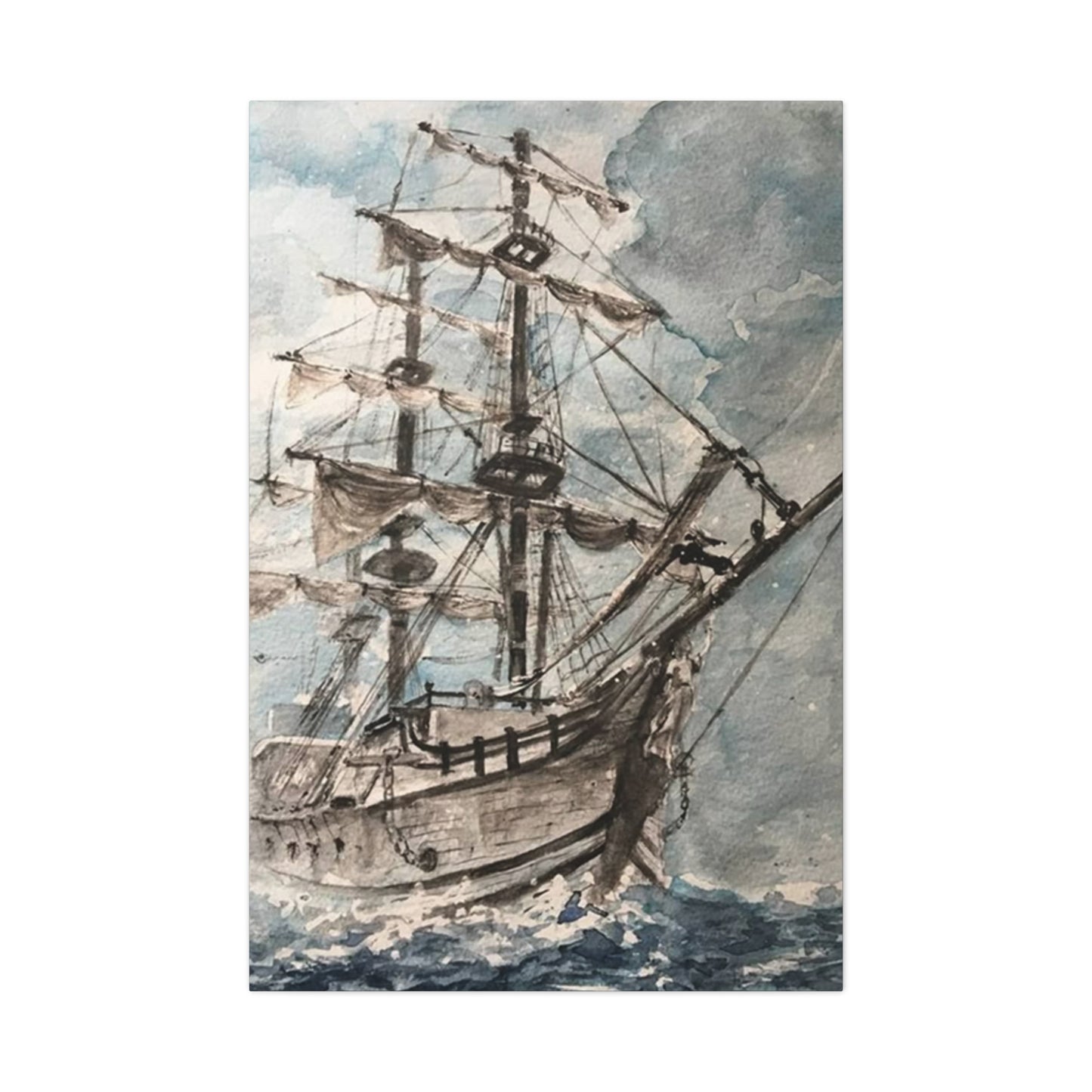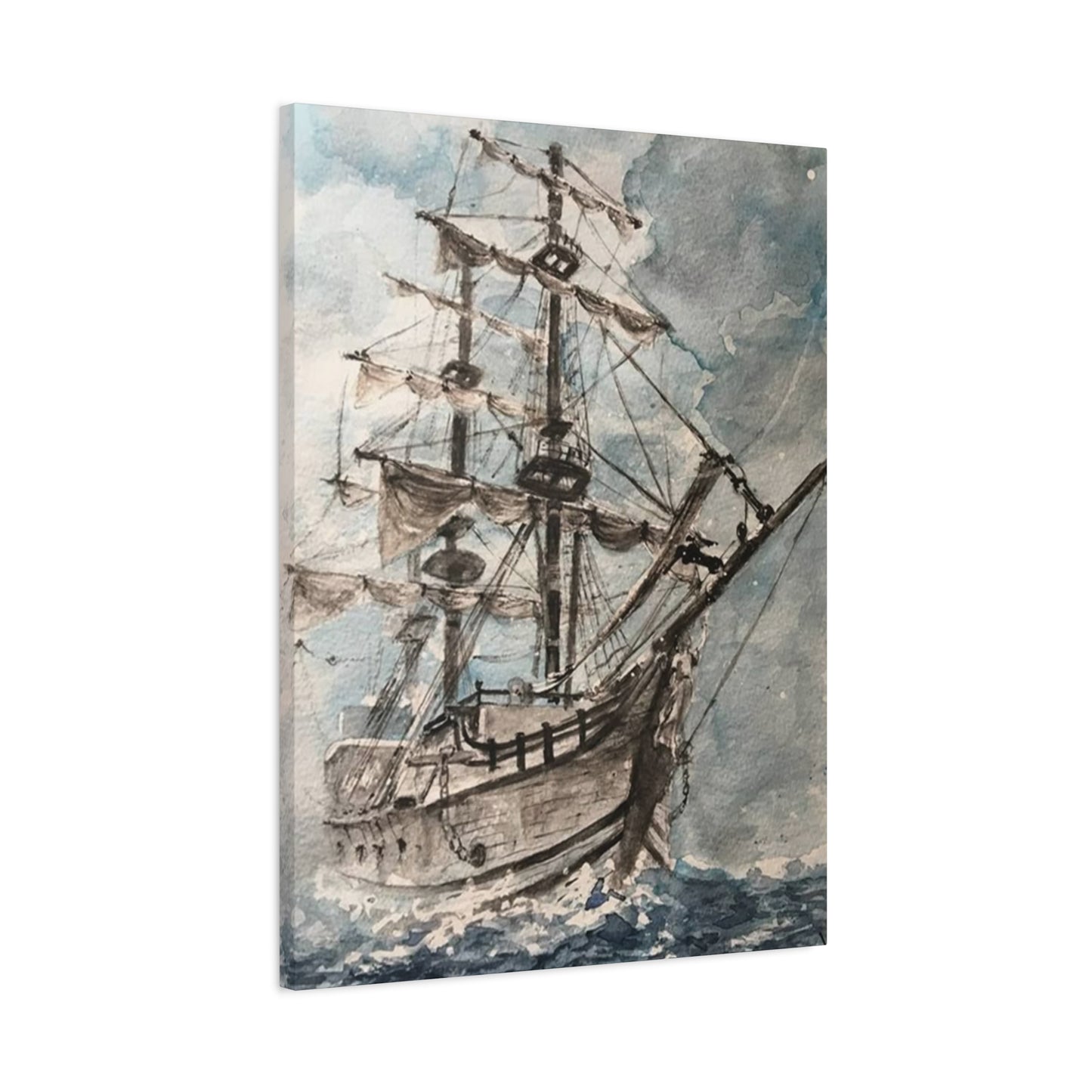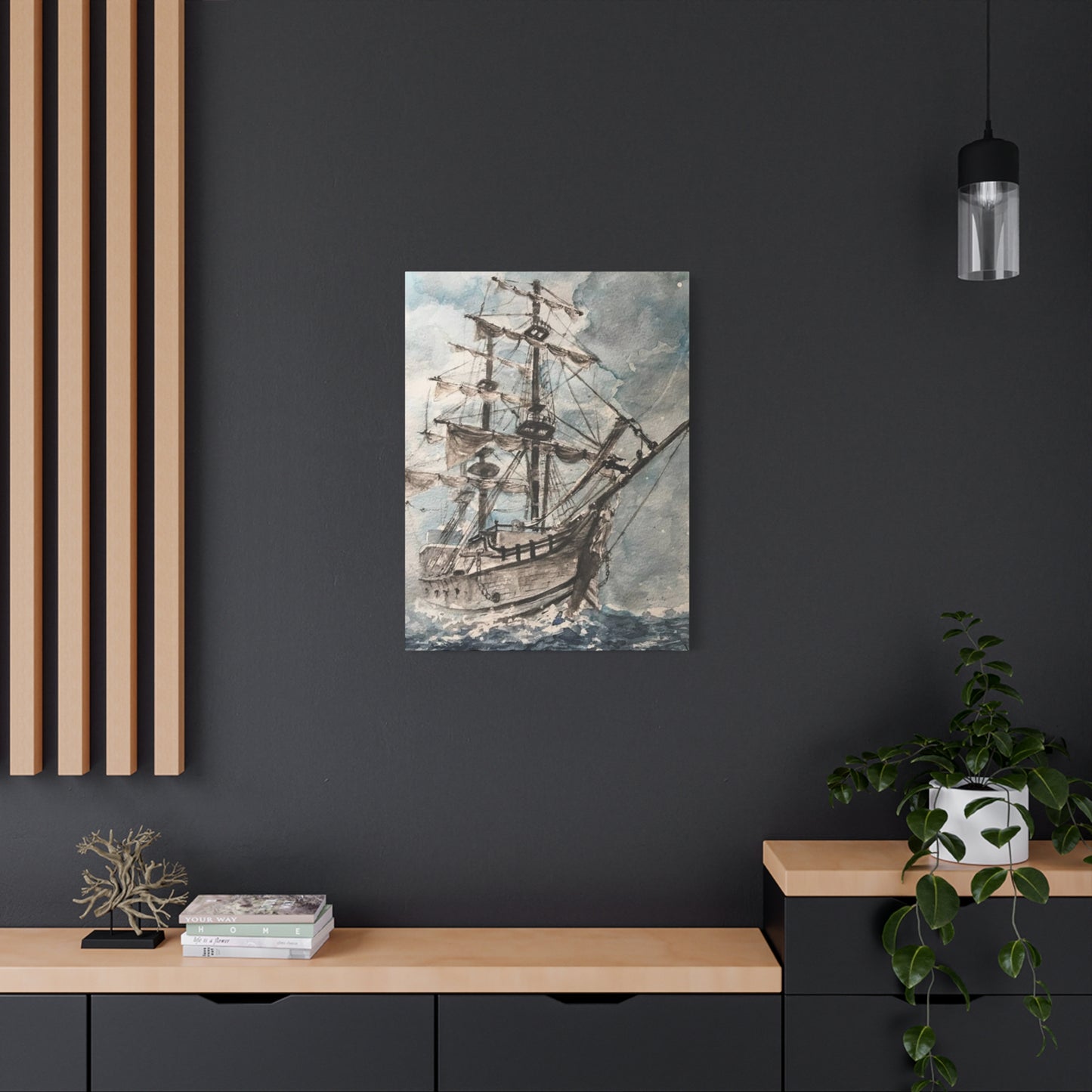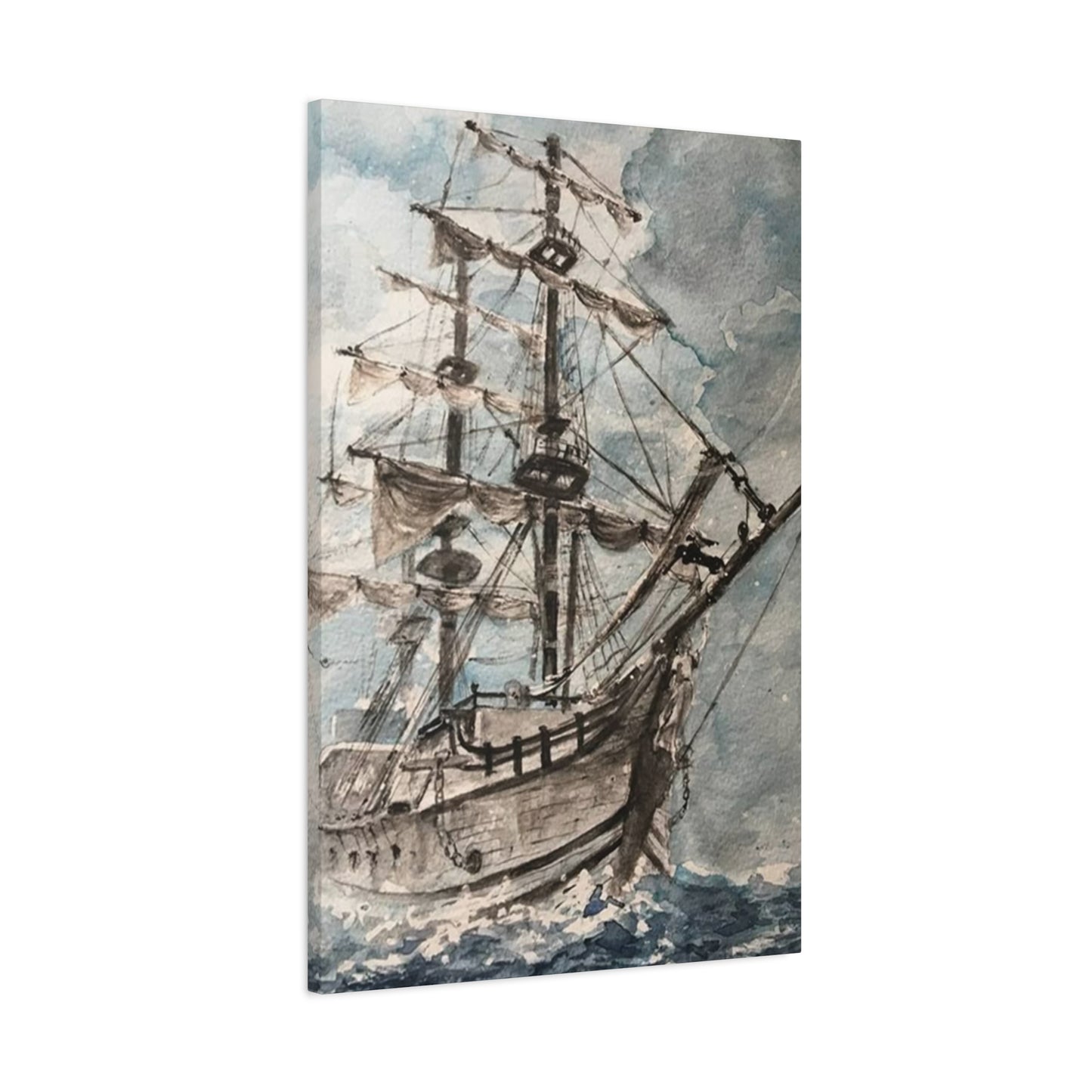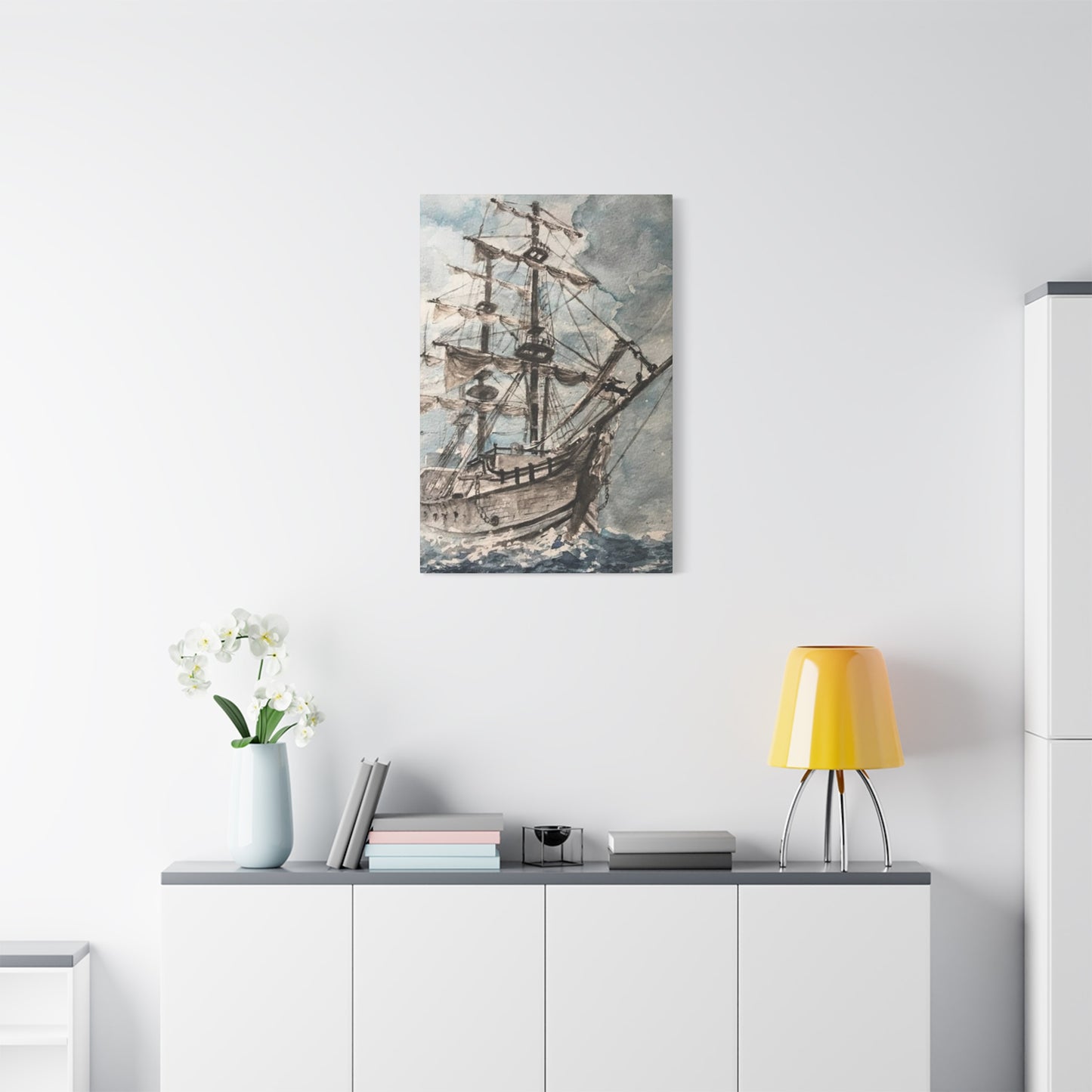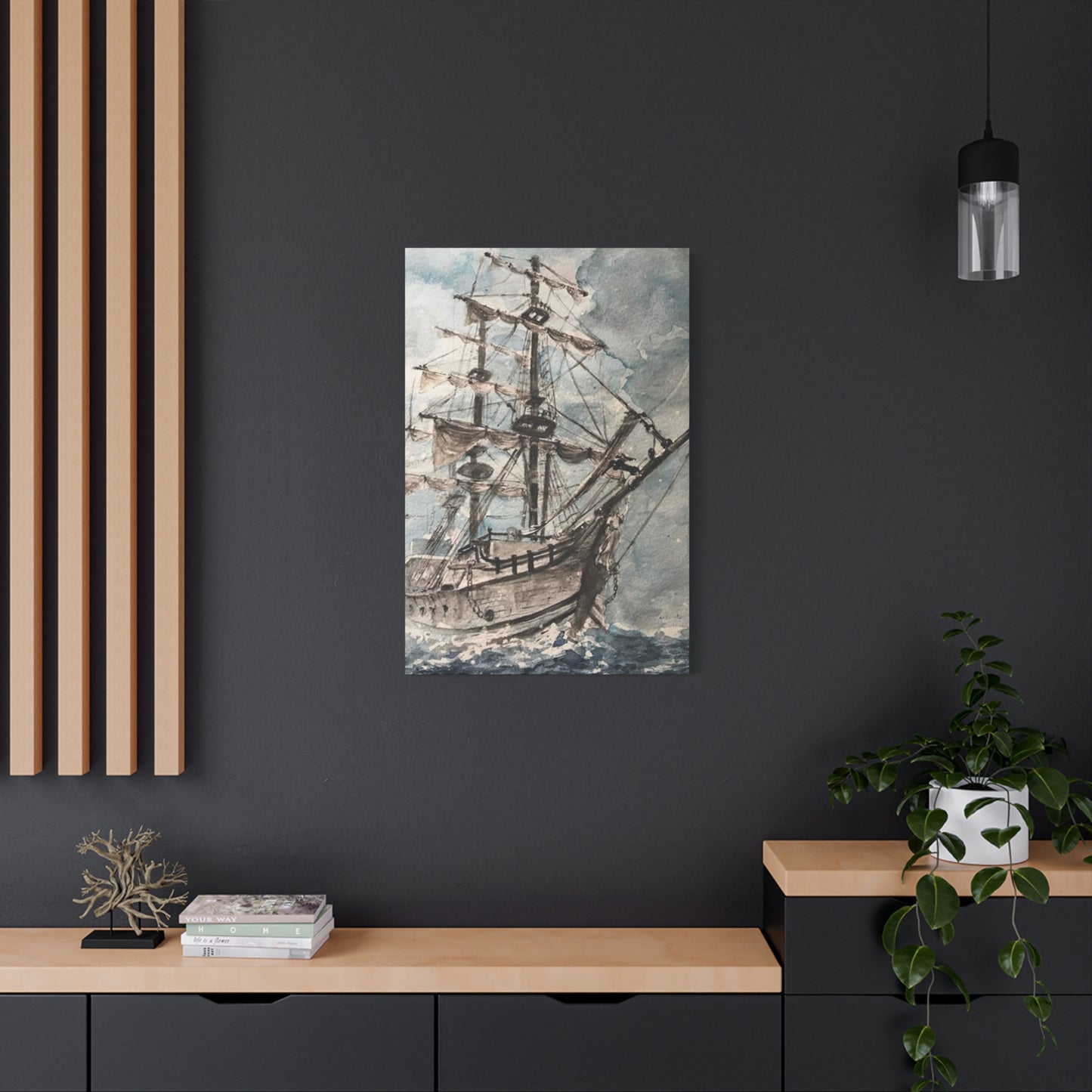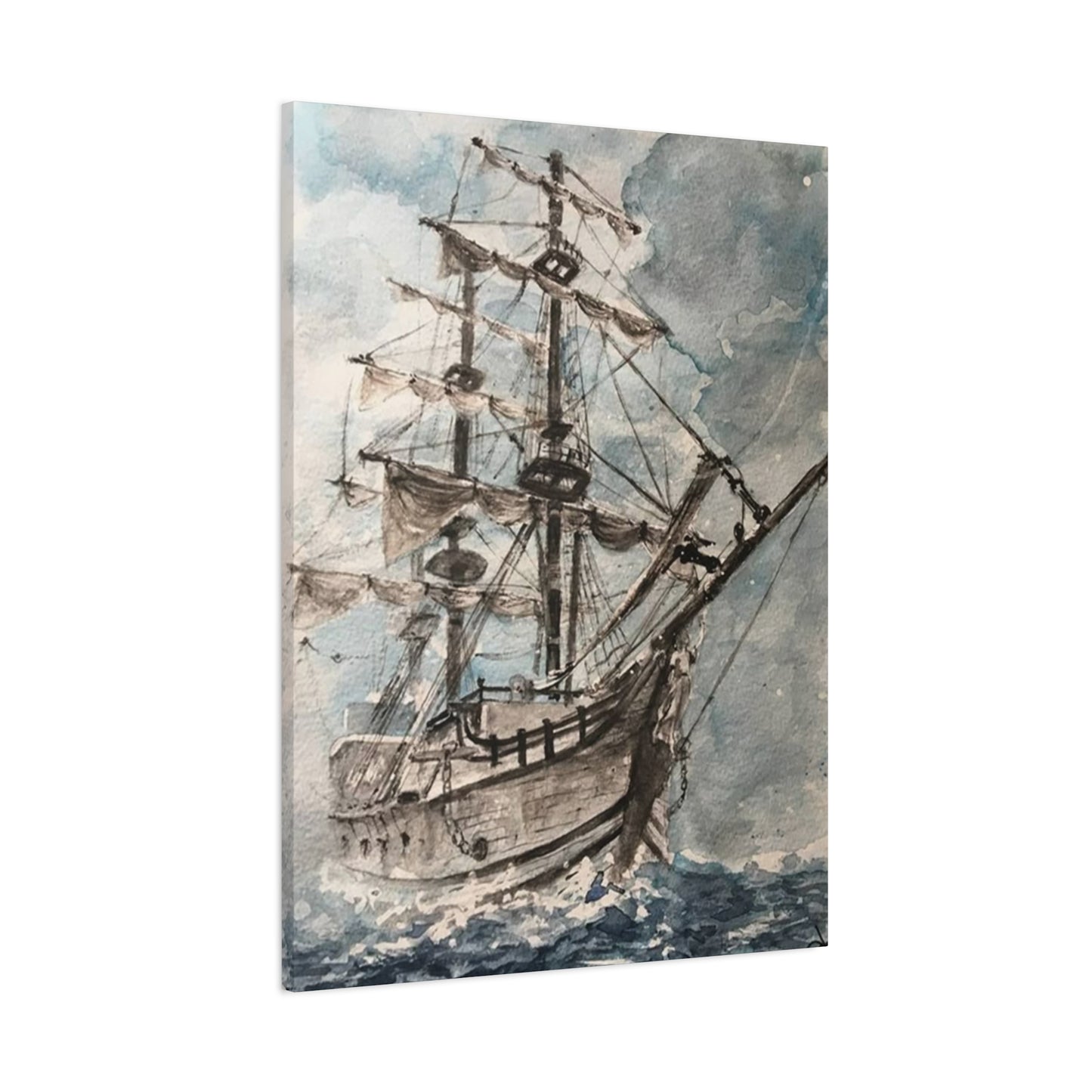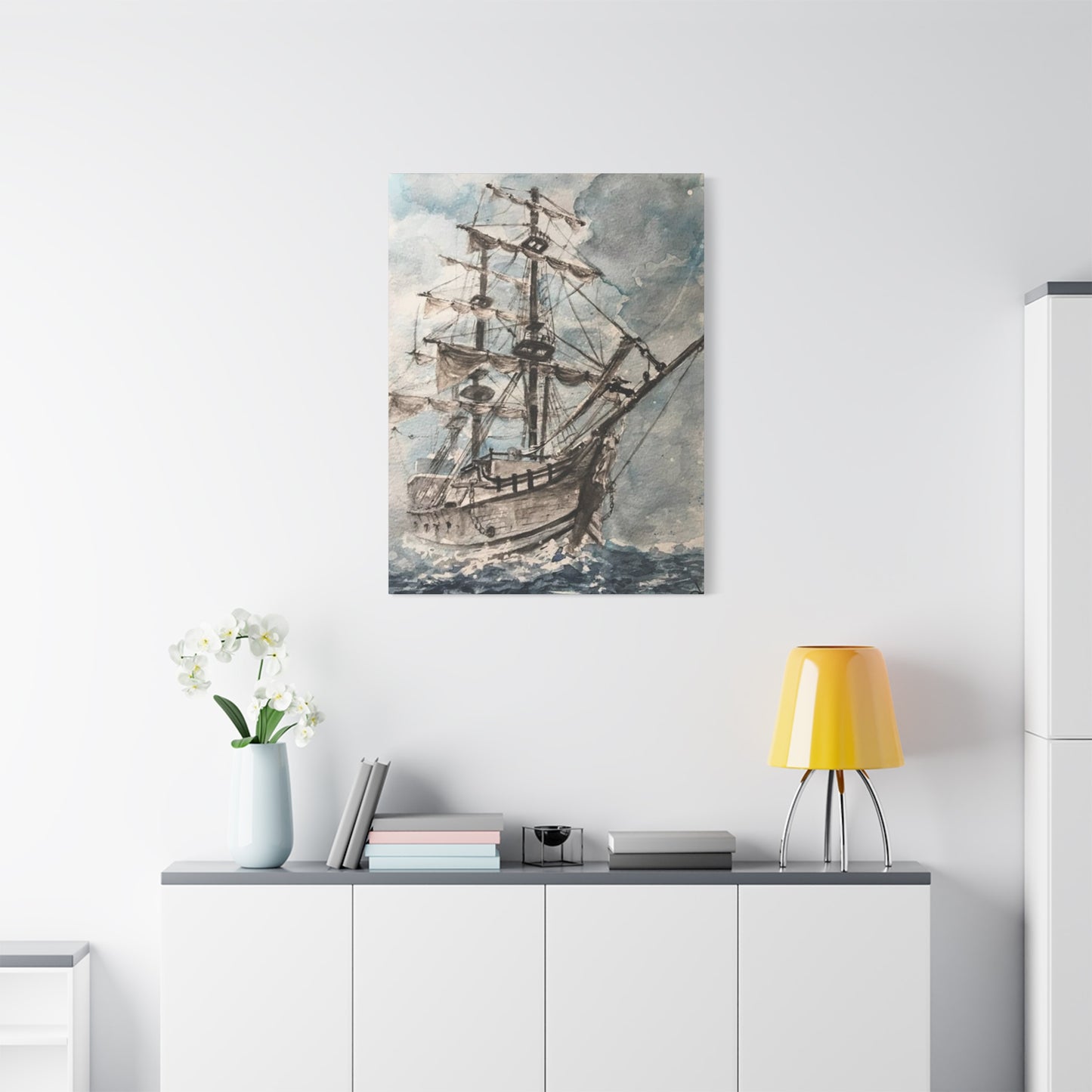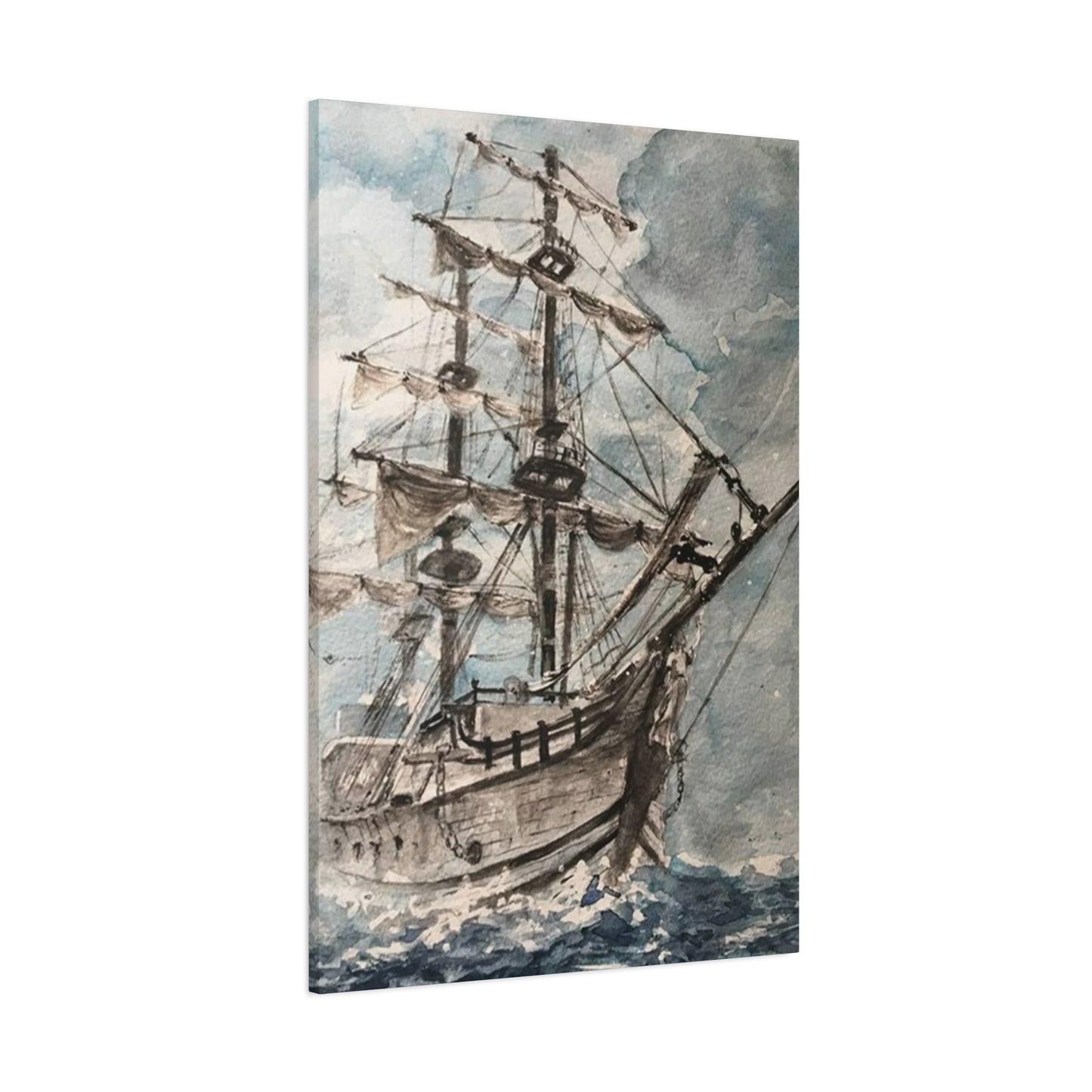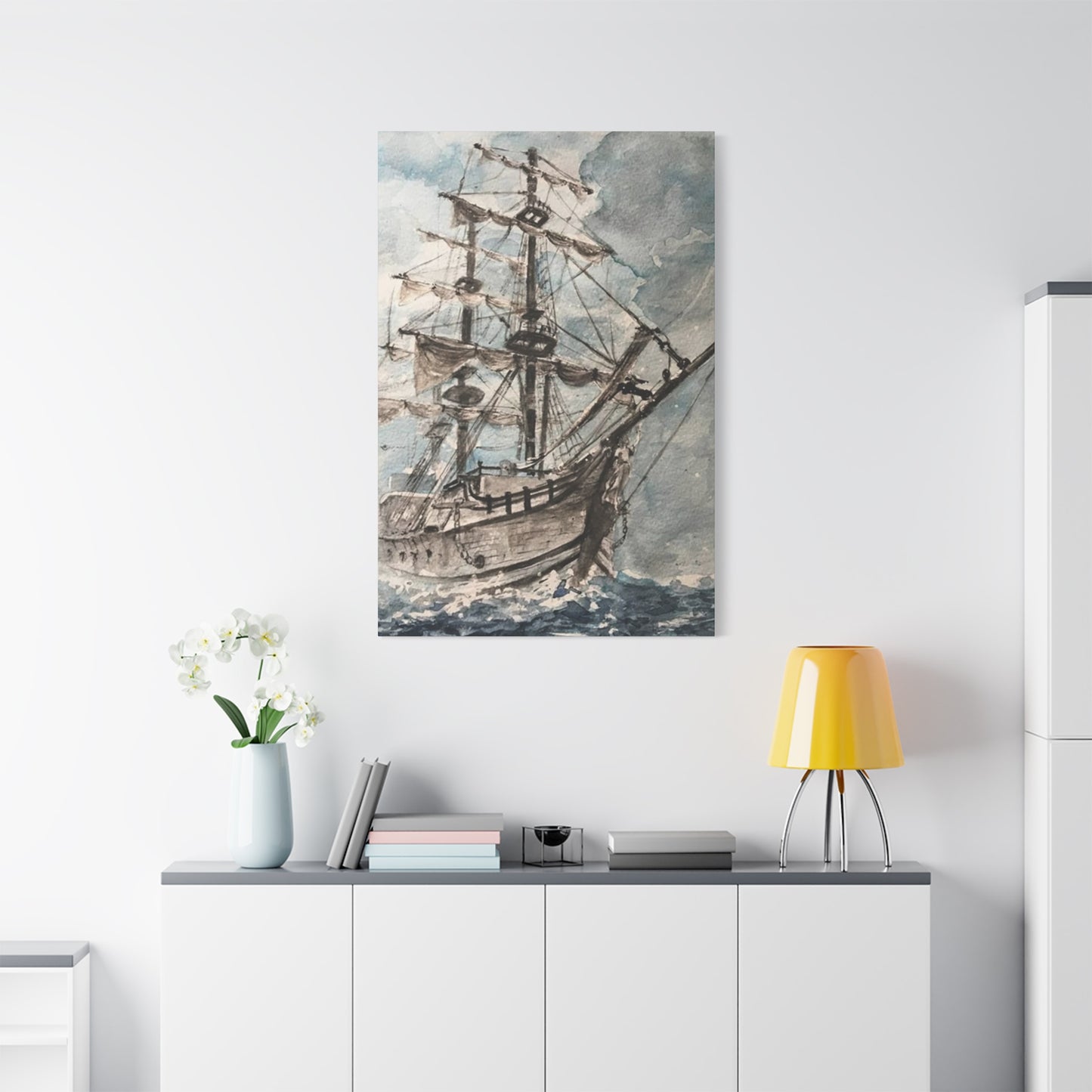Sailing Into Serenity: The Timeless Appeal of Ship Sailing in Ocean Wall Art
The allure of maritime imagery has captivated homeowners and interior designers for generations, serving as a powerful visual anchor that transforms ordinary spaces into extraordinary environments filled with character, depth, and sophisticated elegance. Ship wall art represents far more than mere decoration; it embodies stories of adventure, exploration, and the romantic relationship between humanity and the vast ocean. When carefully selected and strategically positioned, nautical prints and maritime artwork create stunning focal points that elevate entire rooms from commonplace to truly memorable. This comprehensive exploration delves into every aspect of incorporating ship art into your home, examining how these powerful visual elements can reshape your living environment while maintaining modern aesthetic sensibilities.
Capturing the Spirit of Exploration in Decor
The human desire to explore, discover, and venture into unknown territories manifests profoundly through decorative choices that reflect wanderlust and aspirations for adventure. Ship imagery serves as a tangible representation of exploration, connecting inhabitants to centuries of maritime history and the brave souls who navigated uncharted waters. When you incorporate vessel-themed artwork into your home, you're not simply hanging a picture on your wall; you're infusing your space with the essence of discovery and the promise of endless horizons.
Maritime exploration represents humanity's greatest achievements, from early trading voyages to modern expeditions across treacherous seas. Ship wall art captures these monumental journeys in visual form, allowing residents to experience fragments of this grand heritage daily. The presence of exploration-themed artwork encourages contemplation and inspiration, reminding viewers that beyond their immediate surroundings lies a world full of possibilities waiting to be discovered. Whether you're drawn to the romantic notion of sailing adventures or fascinated by the historical significance of maritime commerce, ship art provides a window into these compelling narratives.
Creating an environment that celebrates exploration doesn't require expensive renovations or dramatic changes. Strategic placement of nautical prints can fundamentally alter the ambiance of a room, infusing it with the spirit of adventure without overwhelming the space. The key lies in selecting imagery that resonates with your personal connection to maritime heritage and adventure. Whether you prefer historical vessels, modern sailing ships, or romantic interpretations of ocean-going craft, the options available ensure you'll find artwork that speaks to your unique vision of exploration and discovery.
The psychological impact of exploration-themed decor extends beyond aesthetics. Research consistently demonstrates that environments featuring travel and adventure imagery positively influence mood, creativity, and motivation levels. When surrounded by visual representations of exploration, residents report feeling more inspired, more optimistic about future endeavors, and more connected to broader human experiences. Ship art accomplishes this psychological transformation through subtle yet powerful visual messaging that resonates on both conscious and subconscious levels. Studies examining environmental psychology reveal that maritime-themed spaces encourage residents to think expansively about possibilities and maintain more positive outlooks regardless of external circumstances.
Large Ship Prints as Dramatic Focal Points
Few decorative elements command attention quite like oversized ship prints, which serve as architectural features in their own right rather than supplementary wall decorations. When executed with intention and strategic placement, large-scale maritime artwork becomes the defining characteristic of an entire room, drawing viewers' eyes immediately and establishing the space's aesthetic direction. These commanding pieces demonstrate the transformative power of scale in interior design, proving that bigger is indeed better when it comes to making bold visual statements.
The impact of dramatic focal points lies in their ability to anchor a room's design scheme while simultaneously creating visual interest and conversation starters. A well-chosen oversized ship print can serve multiple functions simultaneously: it establishes the room's thematic direction, provides color and texture that influences furnishing choices, and creates a sense of intentional design that elevates the entire space. Rather than appearing as random decoration, large prints communicate confidence in aesthetic choices and demonstrate thoughtful curation of the home environment. Interior designers consistently recommend focal point-driven design because it creates visual organization that prevents spaces from appearing cluttered or directionless.
Selecting the right oversized print requires consideration of multiple factors, including available wall space, existing color palettes, lighting conditions, and the room's overall design scheme. The most successful large prints share certain characteristics: they feature compelling imagery that maintains visual interest upon repeated viewing, they possess depth and complexity that rewards closer examination, and they demonstrate quality craftsmanship that justifies their prominent positioning. Vintage sailing ships, contemporary yacht imagery, or historical maritime scenes all work beautifully as dramatic focal points, depending on personal preference and existing décor. The fundamental criterion involves selecting prints that genuinely captivate you, as artwork you love will naturally become more engaging focal points than pieces selected purely for decorative purposes.
Placement strategy determines whether large prints enhance or overwhelm their environments. The most effective positioning typically involves walls that naturally draw attention, such as the area directly facing a primary seating location or the wall guests encounter upon entering a room. Adequate white space surrounding the print prevents the composition from appearing cramped or aggressive, while thoughtful framing choices enhance the artwork's visual impact and integration with surrounding design elements. When properly executed, oversized ship prints transform blank walls into sophisticated gallery-worthy displays that command respect and admiration.
Nautical Elegance for Modern Homes
Contemporary interior design increasingly embraces nautical elements, recognizing that maritime aesthetics transcend time periods and seamlessly integrate with modern sensibilities. The challenge lies in incorporating traditional maritime imagery without creating themed environments that feel cartoonish or dated. Sophisticated approach to nautical elegance involves selecting refined ship artwork that complements minimalist design principles while maintaining the sophistication expected in contemporary spaces. This careful balance results in homes that feel current, elegant, and distinctly personal.
Modern nautical design rejects overwrought theming in favor of curated pieces that suggest rather than announce maritime influences. A single exceptional ship print displayed prominently alongside contemporary furniture and neutral color palettes creates an environment that feels intentional and design-forward. This approach appeals to homeowners seeking to incorporate their maritime interests without transforming their homes into novelty spaces dominated by anchor motifs and ship wheels. The philosophy underlying modern nautical design emphasizes quality over quantity, with each piece selected for its inherent beauty and meaningful contribution to overall design schemes.
The integration of ship art into modern interiors benefits from understanding contemporary design principles, particularly the emphasis on negative space, minimalist color palettes, and functional elegance. Contemporary homes typically feature clean lines, neutral backdrops, and carefully selected accent pieces that serve both aesthetic and psychological purposes. Ship prints fit naturally into this framework, providing visual interest and thematic coherence without competing with the sophisticated simplicity that defines modern design philosophy. By selecting artwork that complements rather than competes with modern design sensibilities, residents create environments that feel cohesive and intentionally designed.
Color considerations become paramount when introducing ship artwork into modern spaces. Rather than selecting prints dominated by bright nautical blues and primary colors, contemporary design favors muted palettes featuring navy, charcoal, cream, and steel tones. These sophisticated color choices ensure that maritime imagery enhances rather than dominates, allowing the artwork to function as a refined element within a larger cohesive design scheme. The result is a space that feels both modern and subtly maritime, elegant and personally meaningful. This restraint in color selection represents a key distinction between contemporary nautical design and traditional themed approaches.
Ocean Ship Art for Coastal Interior Themes
Coastal interior design celebrates the relaxed elegance and natural beauty of seaside environments, drawing inspiration from beach houses, maritime communities, and the aesthetic principles that define life near ocean waters. Ship art serves as a natural complement to coastal design philosophies, providing visual anchors that reinforce thematic consistency throughout coastal-inspired interiors. Whether you live near actual coastlines or aspire to create beach-inspired environments inland, ocean ship art facilitates the creation of cohesive, thematically unified spaces that evoke the peace and beauty of coastal living.
Coastal interior themes succeed when all design elements work harmoniously to create environments that feel authentic and inviting rather than forced or artificial. Ship artwork contributes significantly to this authentic aesthetic, as maritime imagery naturally belongs in coastal spaces. The presence of vessel-themed art validates other coastal design choices, from driftwood accessories to nautical textiles, creating visual narratives that feel internally consistent and thoughtfully curated rather than randomly assembled. When residents commit to coastal design direction, incorporating quality ship art becomes essential component rather than optional accessory.
The specific style of ship art selected for coastal themes should reflect the particular aesthetic direction of the overall design plan. Rustic coastal design featuring weathered finishes and natural materials pairs beautifully with historical sailing ship imagery rendered in muted tones. Contemporary coastal design emphasizes clean lines and sophisticated minimalism, calling for more streamlined ship imagery displayed in modern frame styles. Tropical coastal aesthetics benefit from vibrant ship prints featuring dynamic ocean scenes and colorful maritime life. This intentional matching of artwork style to design direction ensures harmonious visual integration.
Creating successful coastal interiors requires understanding how maritime elements contribute to the overall emotional experience of a space. Coastal design fundamentally aims to create calm, restorative environments that transport inhabitants to peaceful seaside settings. Ship art accomplishes this transportation through visual storytelling that connects residents to ocean environments, whether through realistic documentation of actual vessels or artistic interpretations that capture the essence of maritime adventure. The result is a coastal interior that feels authentic, inviting, and deeply connected to the natural beauty of maritime environments.
Creating a Sense of Freedom with Ship Imagery
Freedom represents one of humanity's most powerful and universally desired concepts, and ship imagery powerfully evokes this fundamental human aspiration. Vessels at sea inherently symbolize liberation from constraints, the ability to journey to distant destinations, and the courage to venture beyond established boundaries. When incorporated into home environments, ship art serves as a daily visual reminder of freedom's possibilities, inspiring residents to embrace their own adventurous spirits and remain open to life's vast potential for exploration and growth.
The psychological connection between maritime imagery and freedom operates on multiple levels. On surface level, ships represent literal freedom of movement and the ability to travel to distant locations. On deeper psychological levels, maritime vessels symbolize liberation from societal constraints, personal growth through challenging experiences, and the courage required to pursue meaningful endeavors. This multifaceted symbolism explains why ship art resonates so powerfully with diverse audiences regardless of age, background, or personal circumstances. Environmental psychologists note that symbols of freedom displayed in home environments contribute measurably to residents' psychological sense of agency and autonomy.
Home environments infused with freedom-evoking imagery demonstrate measurable psychological benefits for residents. Studies in environmental psychology indicate that spaces featuring imagery associated with liberty, possibility, and adventure positively influence mood, creativity, and motivation levels. Residents of homes decorated with ship art and maritime themes report feeling more optimistic, more inspired to pursue personal goals, and more connected to broader human experiences involving exploration and discovery. These benefits extend beyond mere decoration to fundamentally influence the psychological state of inhabitants.
Incorporating freedom-inspiring ship imagery allows individuals to create personal sanctuaries that reflect their deepest values and aspirations. Rather than accepting homes as passive backdrops for daily life, residents can actively shape their environments to reinforce the qualities they most value, including freedom, courage, and the pursuit of meaningful adventures. Ship art facilitates this environmental personalization, allowing inhabitants to surround themselves with visual reminders that life extends far beyond immediate circumstances and that freedom represents not merely a concept but an achievable and worthwhile pursuit.
Black-and-White Ship Prints for Minimalist Spaces
Minimalist interior design philosophy emphasizes simplicity, functionality, and the elimination of unnecessary visual clutter, creating spaces that feel calm, organized, and intentionally curated. Black-and-white imagery aligns perfectly with minimalist principles, offering sophisticated visual interest without introducing color complexity that might compromise the aesthetic purity minimalism demands. Ship prints rendered in black-and-white tones serve as ideal focal points for minimalist spaces, providing subject matter richness while maintaining the visual restraint that defines contemporary minimalist design.
The beauty of black-and-white ship prints lies in their inherent versatility and the way they complement virtually any color palette. Rather than competing with carefully selected accent colors or neutral backdrops, monochromatic maritime prints enhance existing design schemes while contributing sophisticated visual depth. The absence of color focuses attention on composition, line, form, and the subtle details that distinguish exceptional artwork from mediocre decoration. This concentration on fundamental design elements creates visual sophistication that serves minimalist spaces exceptionally well. Minimalist design philosophy recognizes that removing color actually enhances perception of form and compositional structure.
Historical maritime imagery translates particularly beautifully into black-and-white formats, capturing the timeless quality that defines minimalist aesthetics. Vintage sailing ship engravings, historical maritime documentation photography, and contemporary minimalist interpretations of maritime themes all work effectively in monochromatic presentations. The resulting artwork feels simultaneously contemporary and historically grounded, appealing to residents seeking design that transcends temporal trends while maintaining current visual relevance. This temporal flexibility represents significant advantage for residents committed to minimalist design but unwilling to sacrifice aesthetic depth.
Technical quality becomes especially important when working with black-and-white ship prints, as the absence of color means every other design element must carry proportional visual weight. Superior composition, precise execution, and thoughtful framing all contribute to the success of monochromatic maritime artwork in minimalist spaces. When properly selected and presented, black-and-white ship prints demonstrate that minimalism need not mean visual boredom; rather, it represents a refined approach to decoration that celebrates quality, intention, and the inherent beauty of carefully chosen design elements. Residents seeking minimalist environments need not sacrifice engaging artwork or visual interest to maintain design principles.
Decorating Entryways with Grand Nautical Art
Entryways establish first impressions and set aesthetic expectations for everything visitors subsequently encounter within a home. Strategic placement of grand nautical art in entryway spaces immediately communicates the homeowner's design sensibility, interests, and aesthetic sophistication. Rather than leaving entryways as neutral transitional spaces, incorporating substantial ship artwork transforms these areas into compelling introduction galleries that establish thematic direction and create memorable initial impressions that influence visitor perceptions throughout their time in the home.
The entryway represents an ideal location for oversized ship prints because these spaces typically feature substantial wall areas capable of accommodating large-scale artwork. The psychological impact of encountering impressive maritime imagery upon entering a home creates lasting impressions that shape the visitor's entire experience within the space. Additionally, entryway placement ensures that residents themselves benefit from daily exposure to meaningful imagery that reinforces personal values and aesthetic preferences every time they enter or exit their homes. This repeated exposure strengthens psychological associations and emotional connections with selected artwork.
Successful entryway displays require consideration of practical factors including lighting conditions, wall proportions, and architectural features. Natural light from entry doors or windows dramatically influences how ship artwork appears throughout different times of day, with some lighting conditions enhancing visibility while others create shadows or glare. Positioning prints to optimize lighting ensures maximum visual impact while avoiding problematic glare or darkness that might diminish the artwork's effectiveness. Architectural considerations, such as the presence of windows, doors, or architectural details, should inform placement decisions to ensure artwork integrates harmoniously with existing structural elements.
The psychological welcome created by impressive entryway art extends beyond mere aesthetics to influence how residents themselves feel upon entering their homes. Rather than entering neutral spaces, residents encounter daily visual reminders of their interests, values, and aesthetic aspirations. This environmental personalization contributes to greater satisfaction with living spaces and enhanced sense of home ownership pride. Visitors, too, benefit from this immediate aesthetic communication, understanding that they're entering spaces thoughtfully designed and personally meaningful to residents. Quality entryway displays thus serve multiple psychological and social functions beyond their primary decorative purposes.
Vintage Sailing Ships Meet Modern Decor
The juxtaposition of historical maritime imagery with contemporary design elements creates visually compelling environments that honor traditional aesthetics while maintaining modern sensibilities. Vintage sailing ship artwork brings authentic historical character to modern spaces without requiring residents to commit entirely to period design or recreate historical environments. This careful balance between old and new represents sophisticated interior design that transcends narrow aesthetic categories to create homes that feel both timeless and current, respectful of heritage while fully embracing contemporary living.
Historical sailing ships possess inherent visual drama that translates beautifully across centuries of artistic interpretation and stylistic evolution. Whether rendered in classical maritime art traditions or reimagined through contemporary artistic perspectives, vintage ship imagery retains compelling qualities that reward repeated viewing and continued appreciation. Modern homeowners increasingly recognize that historical elements need not feel dated or out of place; instead, carefully selected vintage imagery can enhance contemporary spaces with character and depth that newer design trends struggle to achieve. This appreciation for historical elements represents shift toward valuing authenticity and timelessness over momentary fashion trends.
The integration of vintage maritime elements into modern interiors works best when approached thoughtfully, ensuring historical references feel intentional rather than accidental or mismatched. Pairing period ship prints with contemporary frame styles, modern furnishings, and current color palettes creates visual interest through contrast while maintaining overall design coherence. The resulting spaces feel dynamic and sophisticated, suggesting that residents possess sufficient aesthetic confidence to honor traditions while fully engaging with contemporary design principles and modern living requirements. This balance represents hallmark of design maturity and aesthetic sophistication.
Sourcing authentic vintage ship imagery requires patience and careful evaluation to ensure quality and authenticity. Reproduction prints of historical maritime imagery offer accessible alternatives to genuine antique pieces, providing authentic aesthetic qualities without the investment or preservation concerns associated with actual historical artifacts. Both original and high-quality reproductions contribute effectively to modern interior schemes, providing the historical authenticity and visual character that distinguish homes featuring vintage maritime elements from spaces relying exclusively on contemporary artwork. Smart sourcing strategies allow residents to achieve vintage aesthetic authenticity without substantial financial investment.
How Ship Wall Art Inspires Travel Dreams
The human imagination flourishes when presented with visual stimuli that suggest possibility and adventure, and ship imagery powerfully activates these imaginative capacities by connecting viewers to centuries of maritime exploration and discovery. Ship wall art serves as visual catalyst for daydreaming, inspiring residents to contemplate distant destinations, imagine themselves aboard vessels exploring unknown waters, and envision travel adventures that expand their understanding of world geography and cultural diversity. This inspirational function transforms artwork from passive decoration into active catalyst for personal growth and expanded perspective.
Psychology research consistently demonstrates that environmental imagery influences thought patterns, daydreaming content, and aspirational thinking. Residents surrounded by maritime imagery report increased frequency of travel-related daydreams, greater curiosity about geographical locations, and enhanced motivation to pursue actual travel experiences. Ship art facilitates this psychological engagement by providing visual anchors that sustain contemplation and imagination throughout daily activities. Unlike abstract imagery that might inspire general creativity, maritime prints specifically engage travel-related imagination, creating spaces that naturally encourage residents to think expansively about world exploration and adventure pursuit.
The inspirational power of travel-themed art extends beyond individual daydreaming to influence family conversations and shared aspirations. Homes displaying prominent ship artwork naturally become focal points for discussions about travel plans, dream destinations, and adventure possibilities. Family members gather around impressive maritime prints to discuss potential journeys, share travel stories, and collectively imagine future expeditions. This social dimension of travel-inspired decor strengthens family bonds while cultivating shared values around exploration, adventure, and the pursuit of meaningful experiences beyond daily routines. Homes become spaces for dreaming together rather than mere physical shelter.
Practical benefits accompany the psychological and social advantages of travel-inspiring ship art. Research indicates that individuals living in environments that encourage travel daydreaming demonstrate greater overall life satisfaction, enhanced resilience during challenging periods, and more optimistic outlooks on future possibilities. Rather than viewing travel as luxury reserved for special occasions, residents of homes decorated with maritime imagery develop mindsets that position exploration as ongoing priority and achievable goal. Ship wall art thus functions as subtle but powerful tool for shaping worldviews and encouraging residents to embrace adventure as fundamental life value rather than occasional indulgence.
Pairing Ship Art with Ocean-Inspired Colors
Color selection profoundly influences how viewers perceive and emotionally respond to artwork, and understanding color psychology enables sophisticated pairing of ship imagery with complementary palettes that enhance both visual impact and emotional resonance. Ocean-inspired color schemes featuring blues, teals, greens, and sandy neutrals create naturally harmonious environments for maritime artwork, allowing ship prints to integrate seamlessly while contributing to cohesive overall design schemes. The relationship between maritime imagery and ocean-inspired colors feels organic and intuitive, as if the colors and imagery were designed specifically for one another.
The spectrum of ocean-inspired colors offers remarkable versatility, accommodating diverse aesthetic preferences and design philosophies. Deep navy blues convey sophistication and formality, pairing beautifully with classical ship imagery in traditional or transitional design schemes. Soft aquamarine and turquoise tones create relaxed, contemporary environments suitable for modern or coastal design aesthetics. Muted sage greens and sandy beiges evoke natural coastal landscapes, providing subtle backdrops that allow ship prints to command appropriate visual attention without overwhelming spaces. This color diversity ensures that residents pursuing virtually any design direction can incorporate ocean-inspired palettes that harmonize with maritime artwork.
Technical considerations regarding color relationship influence how effectively ship art performs within ocean-inspired color schemes. Prints featuring predominantly cool tones work beautifully with similar color palettes, creating visually unified compositions that feel internally consistent. Conversely, ship prints incorporating warm tones or varied color ranges can bridge different palette families, providing visual transitions between distinct color schemes and adding dynamic complexity to otherwise homogeneous spaces. Understanding these color relationships allows sophisticated color coordination that transcends obvious matches to create subtle, refined environments that demonstrate design literacy and aesthetic intention.
Lighting dramatically influences how both colors and maritime artwork appear within spaces, making lighting consideration essential when implementing ocean-inspired color schemes. Natural light sources create vastly different visual effects than artificial lighting, with morning light rendering colors differently than evening illumination. Strategic consideration of lighting conditions throughout different times of day ensures that color combinations and artwork visibility remain optimal across varying light conditions. The most successful applications incorporate both natural and artificial lighting, using layered lighting strategies to maintain visual appeal throughout day and evening hours.
Framing Ideas for Oversized Nautical Prints
The frame surrounding artwork functions as visual bridge between the composition itself and its surrounding environment, and frame selection significantly influences how effectively artwork integrates with existing interior design schemes. Oversized nautical prints require particularly thoughtful framing consideration, as frames for large pieces carry substantial visual weight and contribute significantly to overall aesthetic impact. Strategic frame selection can enhance ship artwork while creating visual transitions between prints and surrounding décor, or alternatively, poorly chosen frames can diminish artwork regardless of the composition's inherent quality.
Material selection represents the primary decision point in nautical print framing, with options ranging from traditional wood frames to contemporary metal alternatives and innovative composite materials. Natural wood frames convey warmth and traditional elegance, working beautifully with historical or vintage maritime imagery. Contemporary metal frames featuring brushed finishes or minimalist profiles complement modern ship art and integrate seamlessly with contemporary interior design schemes. The interplay between frame material and artwork style should feel intentional and harmonious rather than coincidental or mismatched.
Color considerations in frame selection extend beyond aesthetic matching to encompass practical visibility and space integration concerns. Light-colored frames create visual separation between artwork and surrounding walls, drawing attention to prints and establishing them as distinct focal points. Darker frames integrate artwork more seamlessly with interiors, allowing surrounding furniture and décor to share visual emphasis rather than concentrating attention exclusively on prints. Neutral frame colors offer versatility, working effectively with diverse artwork styles and interior schemes without imposing strong stylistic statements that might date or limit design flexibility.
Mat selection for oversized prints requires equally careful consideration, as matting significantly influences artwork presentation and the overall visual impact of framed compositions. Quality matting materials, acid-free construction, and appropriate spacing between mat and print protect artwork while creating professional-quality presentations that enhance visual appeal. Color-coordinated matting featuring tones that harmonize with both artwork and frame creates unified, sophisticated presentations, while contrasting matting can establish visual emphasis and highlight specific compositional elements within prints.
Large Ship Art in Living Room Design
Living rooms function as primary social spaces where residents gather for relaxation, entertainment, and meaningful interaction, making these areas ideal locations for substantial artwork that contributes to comfortable, inviting atmospheres. Large ship prints transform living room walls into engaging focal points that encourage conversation, facilitate aesthetic appreciation, and communicate residents' design sensibilities to visitors. Rather than relegating maritime imagery to secondary spaces, incorporating impressive ship art in primary living areas demonstrates confidence in design choices and commitment to creating environments that reflect personal interests and aesthetic values.
Successful living room integration of oversized maritime prints requires thoughtful consideration of furniture arrangement, traffic patterns, and existing architectural features. The most impactful placement typically positions prints as natural focal points that viewers encounter upon entering spaces or settling into primary seating areas. This strategic positioning ensures maximum visual engagement, allowing residents and guests to appreciate artwork fully while maintaining comfortable sightlines from primary viewing locations. Furniture arrangements should facilitate rather than obstruct these viewing experiences, with seating oriented to allow appreciation of impressive prints.
Color coordination between ship artwork and living room décor significantly influences overall spatial aesthetics. Successful integration occurs when maritime print colors establish or complement existing color schemes rather than introducing jarring contrasts. This might involve selecting prints featuring colors already present in furnishings and accessories, or alternatively, choosing artwork that introduces new colors in balanced proportions that enhance rather than dominate existing palettes. When executed thoughtfully, ship art simultaneously stands out as individual focal point while remaining visually integrated within broader design schemes.
The emotional impact of large maritime artwork in living spaces extends beyond aesthetic appreciation to influence the psychological experience of inhabitants. Research indicates that viewing engaging artwork during relaxation periods enhances stress relief, promotes mindfulness, and contributes to overall well-being. Living room displays of impressive ship prints create environments that support these psychological benefits, offering residents opportunities for visual contemplation that contributes to relaxation and improved mental health. Rather than viewing artwork purely as decoration, residents can appreciate maritime prints as active contributors to psychological wellness and emotional satisfaction with their living environments.
Bringing Movement and Energy to Walls
Static wall surfaces lack the visual dynamism that brings interior spaces to life, and strategic artwork selection transforms blank walls into energized focal points that activate spaces and create visual interest. Ship imagery inherently conveys movement through depictions of vessels under sail, turbulent seas, or dynamic maritime scenes that suggest activity and vitality. When displayed prominently, maritime prints bring energetic qualities to walls, transforming them from passive design elements into dynamic focal points that engage viewers and animate entire rooms.
The visual movement suggested by ship imagery works on multiple psychological levels. Compositional elements including diagonal lines, sailing angles, and sea dynamics create visual pathways that guide viewer attention through artwork and around spaces. This compositional movement translates into psychological activation, stimulating viewers' brains to engage more fully with artwork and surrounding environments. The resulting energized atmospheres feel vibrant and alive rather than static or monotonous, contributing to spaces that residents find genuinely engaging and continuously rewarding to inhabit.
Different types of maritime imagery bring varying degrees of visual energy to spaces, allowing residents to calibrate artistic activation according to design preferences and functional requirements. Dynamic scenes depicting vessels under full sail convey maximum movement and energy, working beautifully in spaces where residents desire high levels of visual stimulation and activation. More serene maritime imagery featuring calm seas or peaceful harbor scenes provides subtle movement suggestions without creating overwhelming visual intensity, suitable for spaces where residents prioritize relaxation and tranquility. This range of maritime subjects allows precise calibration of visual energy levels to match intended atmospheric qualities.
The contrast between dynamic maritime imagery and neutral surrounding décor creates visual tension that captures and sustains viewer attention. Rather than allowing room elements to blend together into undifferentiated backgrounds, energetic ship artwork establishes clear visual hierarchy that guides attention and creates dynamic spatial experiences. This deliberate use of artistic energy prevents interior spaces from feeling static or boring, instead cultivating environments that remain visually engaging regardless of how frequently residents view them. The continuous renewal of visual interest contributes to lasting satisfaction with interior design choices and sustained appreciation for chosen artwork.
The Romance of the Sea in Home Interiors
Romance represents a fundamental human experience characterized by beauty, emotion, and the pursuit of meaningful connection, and maritime environments evoke these romantic qualities through their combination of natural splendor, historical significance, and emotional resonance. Ship imagery captures this romantic essence, infusing home interiors with emotional depth and aesthetic sensitivity that transcends purely functional decoration. Residents who incorporate maritime art into living spaces consciously cultivate romantic atmospheres that enrich daily life and create environments suitable for intimate moments and meaningful experiences.
The romantic allure of maritime imagery stems from complex associations between ships, travel, adventure, and human connection across centuries of maritime history. Historical ocean voyages represented ultimate romantic adventures, connecting distant peoples, facilitating cultural exchange, and providing backdrops for countless stories of human courage, passion, and determination. Contemporary residents draw on these rich historical associations when decorating with maritime imagery, consciously or unconsciously evoking the romance of maritime heritage through visual selection. Ship prints thus function as windows into romantic past while remaining emotionally relevant to modern inhabitants.
Creating romantic interiors through maritime art extends beyond selecting beautiful prints to encompassing careful consideration of complementary décor that amplifies emotional resonance. Soft lighting, luxurious textures, and color palettes featuring warm tones enhance the romantic qualities that maritime imagery suggests. Accessories including vintage maps, antique navigational instruments, or romantic literature collections create supporting visual narratives that reinforce and extend the romantic atmospheres that ship art initiates. The resulting environments transcend mere decoration to become fully realized romantic spaces that engage residents emotionally and aesthetically.
The practical benefits of romantic interior design deserve recognition alongside emotional and aesthetic advantages. Psychological research consistently demonstrates that environments designed to evoke positive emotions including romance, wonder, and beauty enhance residents' mood, increase relationship satisfaction, and contribute to overall life contentment. Homes decorated with romantic maritime imagery provide these psychological and emotional benefits while fulfilling essential aesthetic functions. Rather than viewing romantic design as frivolous or sentimental, residents increasingly recognize these design approaches as worthwhile investments in psychological wellness and emotional satisfaction with their living environments.
Why Ocean Ship Wall Art Never Goes Out of Style
Certain design elements transcend temporal trends to maintain enduring appeal across decades and centuries, and maritime imagery ranks among the most consistently appreciated artistic subjects throughout human history. Ship art remains perpetually relevant because maritime imagery engages fundamental human interests in exploration, adventure, beauty, and connection with natural forces. Rather than following narrow fashion trends that quickly fade, ship imagery maintains steady appreciation that suggests deeper resonance with human psychology and aesthetic sensibilities than trends-driven design typically achieves.
The timelessness of maritime imagery stems partly from its connection to fundamental human experiences and emotions that remain constant regardless of historical period or cultural context. Humans across all times and places have felt drawn to water, fascinated by maritime exploration, and inspired by stories of adventure at sea. This universal resonance means maritime imagery speaks to viewers across generation and cultural boundaries, creating emotional connections that feel authentic and personally meaningful rather than arbitrarily fashionable. This fundamental appeal explains why ship art decorates homes from diverse geographical regions and cultural traditions, suggesting something universally compelling about maritime aesthetics.
Fashion cycles inevitably create periods when certain design elements receive heightened attention while others fade temporarily from favor, but maritime imagery demonstrates remarkable resilience across these cyclical trends. During periods when nautical design becomes trendy, ship art benefits from increased visibility and renewed appreciation. During periods when other styles command greater attention, maritime imagery remains appreciated by devoted enthusiasts who recognize its inherent value regardless of current fashion status. This consistent appreciation from dedicated audiences ensures that ship art never completely disappears from design consciousness, maintaining steady presence even when not at height of fashionable attention.
The philosophical implications of timeless design merit consideration when examining maritime imagery's enduring appeal. Design elements that transcend temporal fashion typically offer something beyond surface aesthetics; they engage human psychology at deeper levels and address emotional needs that persist regardless of historical period. Maritime art accomplishes this by addressing fundamental human desires for beauty, connection with nature, inspiration for adventure, and engagement with cultural heritage. By selecting timeless maritime imagery rather than trend-dependent design, residents invest in interiors that will remain meaningful and aesthetically satisfying across many years and changing life circumstances.
Ship and Ocean Scenes for Office Spaces
Professional office environments require design that balances aesthetic appeal with practical functionality and psychological support for productive work, and maritime imagery serves these multiple purposes effectively. Ship and ocean scenes introduce visual interest while maintaining professional appropriateness, avoiding the casualness sometimes associated with highly decorative themes while remaining more engaging than purely neutral office décor. Maritime art in office settings communicates professional sophistication while creating psychologically supportive environments that enhance creativity, focus, and overall work satisfaction.
The presence of engaging artwork in office environments influences worker productivity and psychological well-being, with research consistently demonstrating positive correlations between thoughtful office décor and employee satisfaction, creativity, and performance. Ship imagery contributes to these positive workplace outcomes by providing visual stimulation that prevents monotony while remaining professional in tone and appearance. Unlike purely decorative items that might distract from work, maritime art offers sufficient visual complexity to reward attention during brief viewing moments while remaining appropriate for professional environments where focus on work responsibilities remains essential.
Office environments featuring maritime imagery benefit from the emotional associations these images evoke, including qualities such as calm determination, purposeful progress, and navigational clarity. These psychological associations align naturally with workplace values including goal achievement, strategic planning, and purposeful action. Employees working in spaces decorated with maritime imagery unconsciously absorb these value associations, potentially enhancing motivation and focus. While individual personality factors certainly influence responses to office décor, many workers report that maritime imagery creates calming, inspiring atmospheres that support sustained attention and meaningful work engagement.
Strategic placement of ship art in office spaces deserves careful consideration to ensure artwork enhances rather than distracts from work activities. Wall areas visible from work stations but not directly in the line of sight during focused tasks work particularly well, allowing employees to view maritime imagery during breaks and moments of mental rest. Conference rooms benefit from impressive ship prints that create visually stimulating environments for creative collaboration while maintaining professional appearances appropriate for client meetings. Reception areas featuring prominent maritime artwork establish sophisticated first impressions that communicate professional polish and design consciousness to visitors.
Adding Depth to Rooms with Nautical Wall Art
Three-dimensional visual perception requires multiple depth cues including size relationships, perspective lines, and compositional elements that create illusions of space and distance. Skillfully composed maritime artwork leverages these depth cues to create apparent spatial expansion, making rooms feel larger and more spacious than physical dimensions actually allow. Strategic use of nautical wall art thus serves practical purposes beyond aesthetic appeal, actually influencing perception of room dimensions and contributing to spaces that feel more expansive and less confined than comparable unadorned environments.
Compositional techniques in maritime art naturally create compelling depth illusions that engage viewers' spatial perception at neural levels. Perspective lines created by ship details, rigging, or horizon lines guide viewer attention through artwork and into suggested distances. Atmospheric perspective, where distant elements appear hazier or lighter than foreground elements, creates convincing illusions of vast spaces extending beyond visible artwork. These compositional techniques trigger viewers' spatial perception systems, causing brains to interpret artwork as windows into deeper spaces rather than flat wall surfaces. The resulting depth perception contributes psychologically to room expansion even when physical dimensions remain unchanged.
Color and value relationships within maritime artwork contribute significantly to depth perception and spatial quality. Darker foreground elements combined with lighter background areas create compelling depth illusions that make artwork appear to recede into walls rather than protruding outward. This visual recession contributes to the illusion that walls themselves extend deeper into spaces, making rooms feel larger and more spacious. Conversely, poorly composed artwork with compressed perspective or inadequate depth cues can make spaces feel more cramped or claustrophobic. Selecting maritime prints with strong depth composition actively improves spatial perception and contributes to enhanced room functionality and resident satisfaction with space dimensions.
Practical benefits accompany the psychological advantages of depth-enhanced nautical wall art. Residents living in relatively small spaces often report that strategically placed maritime imagery makes homes feel larger and less confining. Even residents with ample space appreciate the visual expansion that quality depth composition provides, as expanded visual space contributes to psychological comfort and enhanced enjoyment of living environments. This practical advantage explains why maritime art remains particularly popular in urban apartment settings and modest-sized homes where maximizing perceived space represents important design priority.
Conclusion:
Ship sailing in ocean wall art carries a timeless allure that effortlessly blends beauty, symbolism, and emotional depth. These artworks capture more than just a maritime scene—they encapsulate the spirit of adventure, the serenity of open waters, and the graceful power of sailing ships navigating endless horizons. Whether rendered in soft, dreamy colors or bold, dramatic tones, they have the ability to transport viewers to a world where calm seas and distant journeys invite reflection and wonder.
One of the most remarkable qualities of ship sailing wall art is its versatility. It can complement a wide range of interior styles—from coastal and nautical-inspired homes to modern, minimalist, or rustic spaces. A serene seascape with a lone sailing vessel can soften a room and infuse it with tranquility, while a dynamic, wind-swept ocean scene can create a sense of movement and drama. These pieces are not just decorations; they are visual narratives that speak to freedom, exploration, and a deep connection to nature.
Placement and scale play a significant role in how this art transforms a room. A large statement piece above a sofa, bed, or fireplace can anchor a living space with calm, maritime elegance. Smaller prints or a gallery wall arrangement can build a layered story of ocean voyages and open skies, perfect for entryways, reading nooks, or dining rooms. When paired with natural textures such as wood, linen, rope, and soft lighting, the effect is immersive and harmonious.Lighting is especially important in enhancing the mood of sailing art. Gentle, warm lighting emphasizes soft waves and glowing skies, while sharper lighting can heighten dramatic contrast in stormy or dusk scenes. This flexibility allows homeowners to create different atmospheres, from peaceful and meditative to bold and inspiring.
Symbolically, sailing ships have long represented courage, freedom, exploration, and resilience. Incorporating these images into your home adds more than aesthetic value—it introduces a story, a quiet reminder of the beauty of venturing beyond the familiar. In spaces where people gather, such as living rooms and dining areas, ship sailing wall art can spark conversations and set a serene tone. In private retreats like bedrooms or studies, it can offer a sense of escape and calm.
In conclusion, ship sailing in ocean wall art is a classic and meaningful addition to any home. Its ability to combine visual beauty with emotional depth makes it an enduring choice that transcends trends. By carefully selecting the right imagery, placement, scale, and complementary décor, you can create a space that reflects the peace, power, and poetry of the sea.Ultimately, these artworks don’t just decorate walls—they open windows to vast horizons, inspire inner calm, and remind us of the timeless human bond with the ocean’s infinite expanse.

















